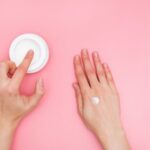Sunburn is a condition where the skin turns red and becomes painful to touch, typically appearing several hours after exposure to UV rays from the sun or other artificial light sources.
Prolonged sun exposure causes sunburn and increases the risk of various other skin conditions, such as skin aging, pigmentation, peeling, and skin cancer. There are many simple home remedies to alleviate sunburn. Sunburned skin usually takes several days to heal, sometimes longer. Additionally, it is essential to protect your skin when outdoors, even on cooler days, to prevent sunburn.

## Signs and Symptoms of Sunburn:
– Redness of the skin
– Warm skin to touch
– Pain, swelling, and itching
– Presence of small blisters on the skin’s surface
– Headache, high fever, nausea, and lethargy in severe cases of sunburn.
Any part of the body exposed to the sun can be affected, including the earlobes, scalp, eyelids, and lips. Even covered areas can get sunburned as UV rays can penetrate thin fabrics.
Signs and symptoms of sunburn typically appear within a few hours of sun exposure and continue to develop over the next few days. In the later stages, the body may heal itself by shedding the damaged upper layer of skin.
## Itchy Face:
An itchy face is a sign of sunburned and tanned skin.
If you experience any of the following dangerous symptoms, seek medical attention:
– Large, painful areas of damaged skin
– Accompanied by fever, headache, confusion, or vomiting
– No improvement after several days
– Presence of yellow fluid-filled blisters, indicating infection
## Treating Sunburn:
### Cold Compress or Cool Bath:
While a cold compress or cool bath may not necessarily prevent skin peeling, it can provide temporary relief from the symptoms if your sunburn feels hot, swollen, and uncomfortable. Avoid using loofahs and brushes while bathing, as these can irritate or pull on peeling skin.
You can make a cold compress at home by putting ice cubes in a plastic bag. Never apply ice directly to sunburned skin, as extreme cold can further damage the skin and potentially worsen peeling, hindering the healing process.
### Apply Aloe Vera or Moisturizer:
Using an appropriate moisturizer can speed up the healing process and reduce peeling. Look for products containing aloe vera gel, as aloe vera moisturizes the skin and contains anti-inflammatory compounds that reduce swelling and promote skin healing.
### Oatmeal Bath:
Oatmeal has anti-inflammatory properties that can help reduce swelling. It also helps the skin retain moisture, aiding the healing process. Oatmeal paste is different from the oatmeal you eat for breakfast. However, you can use whole oats to make oatmeal paste. Put some uncooked whole oats in a food processor or blender and grind them into a fine powder. Add about a cup of this powder to a warm or cool bath and soak for 10-15 minutes.
_Source: Consumption_
Is Slathering on Sunscreen Really as Good as We Think?
The sun’s rays can be harsh on our skin, and while we diligently apply sunscreen daily, many of us still experience skin concerns such as dark spots, freckles, and uneven skin tone. This has led to a common misconception that a thicker layer of sunscreen will provide better protection. However, this is not the case, and understanding the appropriate amount of sunscreen to apply remains a challenge for many.






































